Artist Leonardo da Vinci Created 1508 | Media Beeswax | |
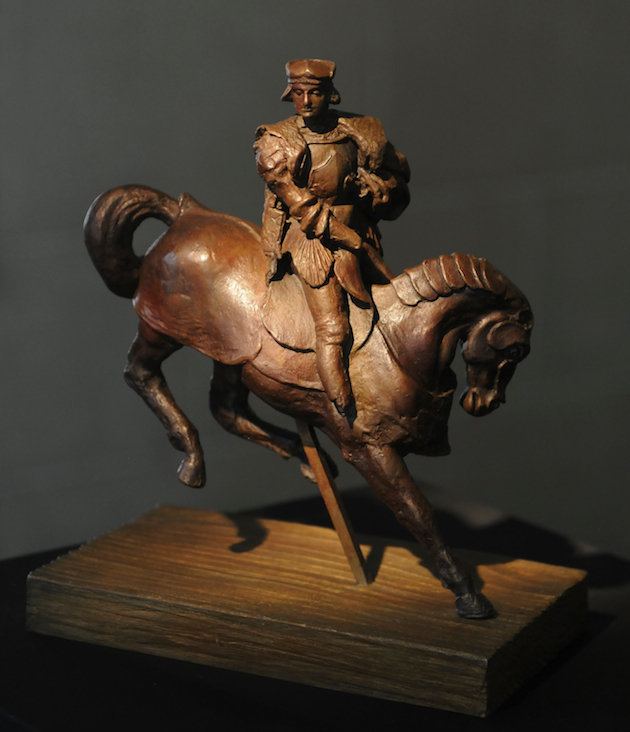 | ||
Similar Leonardo da Vinci artwork, Other artwork | ||
Horse and Rider is a beeswax sculpture depicting a rider on a horse, attributed to Leonardo da Vinci c. 1508-1511. It was intended to be used as a model for a larger commissioned sculpture. However, Leonardo never had the model cast in bronze. It is thought to be the only surviving example of his sculptural work.
Contents
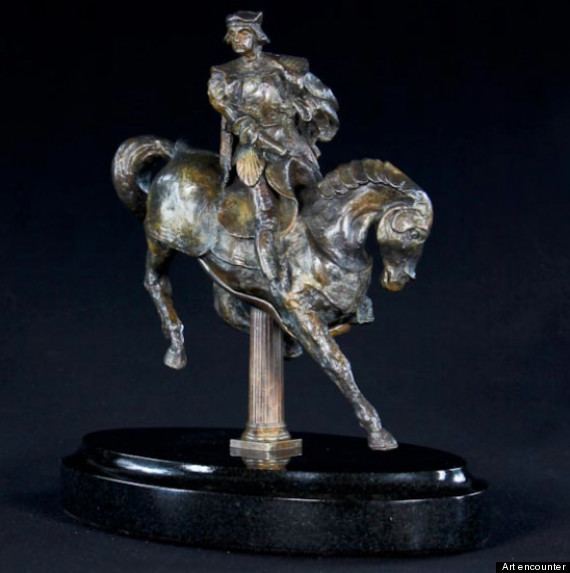
Description
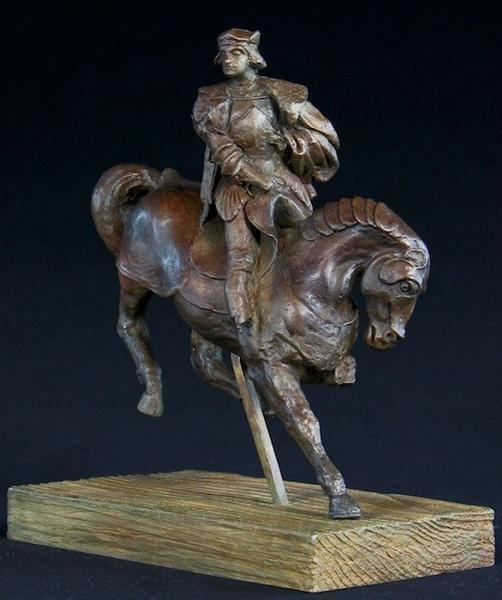
The approximately 10 inches (25 cm) high, 9 inches (23 cm) long, and 3.5 inches (9 cm) wide beeswax sculpture is believed to be a maquette for a full size bronze sculpture. The sculpture is innovative, far removed from the classical models the young Leonardo had been familiar with during his time with Andrea del Verrocchio; particularly when Verrocchio was working on the Equestrian statue of Bartolomeo Colleoni.

Over the centuries the wax sculpture has sustained damage, including the loss of one of the horse's legs, along with the rider's feet and hands. On the horse's chest is an embedded print of a right thumb, believed to be Leonardo's.
Attribution
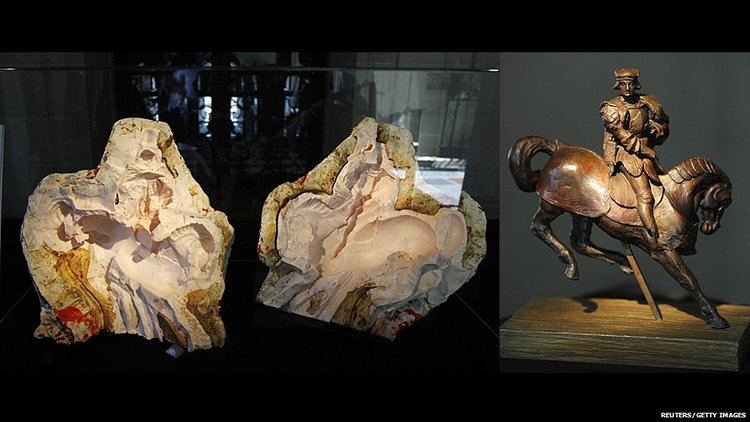
The sculpture was attributed to Leonardo da Vinci by Italian art historian Carlo Pedretti, mainly due to a note Leonardo had written for himself in another work. On a c.1503-1504 worksheet from the Codex Windsor set of Leonardo's drawings are sketches of horses, believed to be part of a study for the painting of The Battle of Anghiari. In the middle of the sheet is a note to "make one of wax about finger long", and the bucking posture of one of the horses is similar to the sculpture. Leonardo may indeed have used wax models to prepare for Anghiari. Art historian Patricia Trutty-Coohill also noticed a resemblance between the rider and Charles d'Amboise from Andrea Solari's painting from c.1507. Charles was one of Leonardo's patrons, and the subject matter would suit what's known of him.
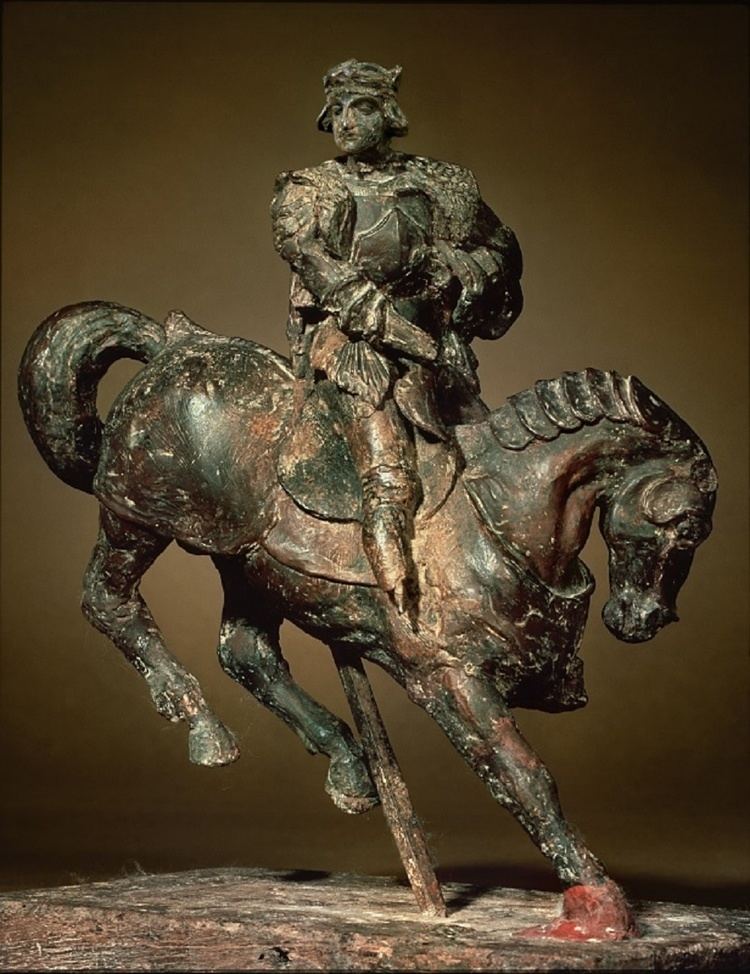
All art scholars have not agreed on Pedretti's attribution however. When exhibited at the Boston Museum of Science in 1997, the museum agreed to change the credit on the label of the sculpture to "attributed to", but art historian Jack Wasserman still insisted that "there is no single work of sculpture which Leonardo worked on that survived to today" and that nothing has survived to support the attribution. Art historians Pietro Marani and Franco Cardini, and art critic Vittorio Sgarbi likewise doubted the sculpture's provenance when exhibited in Milan, commenting that there still isn't adequate hard evidence to support the attribution of the work to Leonardo. Cardini criticised the historical accuracy of the sculpture, bringing into question the attire Charles d'Amboise would've worn, and the armour of the horse. He also noted the lack of Leonardo's usual attention to detail, with the frightened bucking posture of the horse in contrast with the serene look of the rider.
History
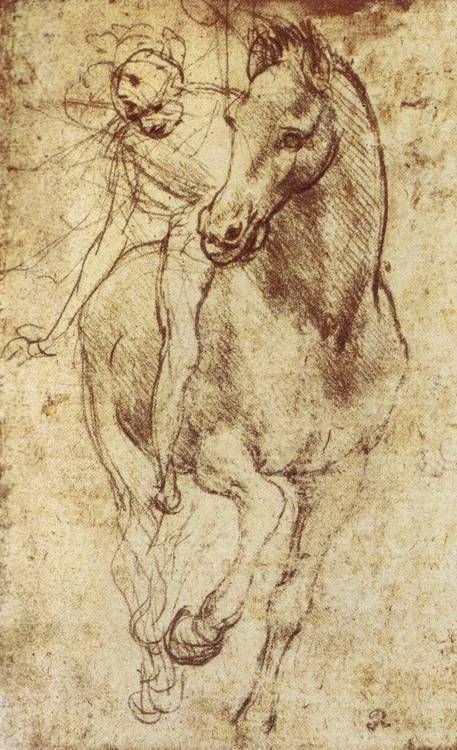
In 1506-1508 Leonardo was working on a commissioned equestrian monument for Gian Giacomo Trivulzio in Milan, but didn't finish it. It's possible that he also worked on one for Charles II d'Amboise, who in 1506-1511 acted as French governor of the Duchy of Milan.
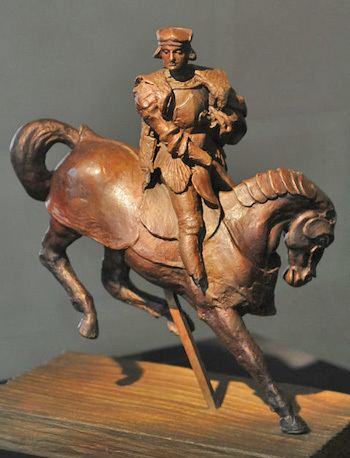
On Leonardo's death in 1519, his apprentice Francesco Melzi inherited his works. The documents of the Melzi d'Eril family, who own Francesco's still existing Villa Melzi in Vaprio d'Adda, don't however have a record of this wax sculpture.
At the turn of the twentieth century, the beeswax sculpture was recorded to have been in the Melzi di Cusano family collections in Milan, and later in Giorgio Sangiorgi's (1886–1960) collection in Rome. An unnamed art collector moved the sculpture from Italy in the early 1920s, and by 1938 it was in Switzerland.
Italian art historian Carlo Pedretti found out about the existence of a wax sculpture, and in 1969 photographed it in a private collection in London. When compiling a 1987 catalogue raisonné of Leonardo's drawings stored in the Royal Collection in Windsor Castle, Pedretti added some of his photos for comparison.
The beeswax model was presented to a group of American businessmen in 1985 in Switzerland, and they had a latex mold made of it. Pedretti was asked to inspect the mold, and stated that the beeswax model may be related to the one he photographed years ago, and that he believes it to be by Leonardo da Vinci. The latex mold was later used to create replicas of the sculpture.
The original beeswax sculpture was displayed around the world in the 1990s as part of a travelling exhibition named "Leonardo da Vinci: Scientist, Inventor, Artist": in Sweden in Stockholm, Malmö and Göteborg in 1995, in Vienna in 1996, and in Boston and Singapore in 1997. Due to its fragility, it now remains in a temperature controlled private collection in London.
Bronze sculpture
In 1987 art collector Richard A. Lewis acquired the 1985 latex mold along with all documentation pertaining to the mold being made. Beginning in 2012, Lewis and a team of experts "pulled" a wax from the latex mold and, using the lost wax process, cast the Horse and Rider sculpture in bronze. They then had close to 1000 castings made from the mold: about 900 in bronze in three different patinas and 100 in silver. They were at sale for $25,000–35,000 each. Some of the replicas have since been for sale with the option of joint ownership to the 2012 bronze cast.
The bronze cast was unveiled to the public on August 27, 2012 at Grey Stone Mansion in Beverly Hills, California, followed by exhibitions in Las Vegas, New York, London, Dallas, Miami, Oregon, and in 2016 in Milan. In early 2015 the mold made of Leonardo's beeswax model, together with the first bronze sculpture, were acquired by another private collector.
